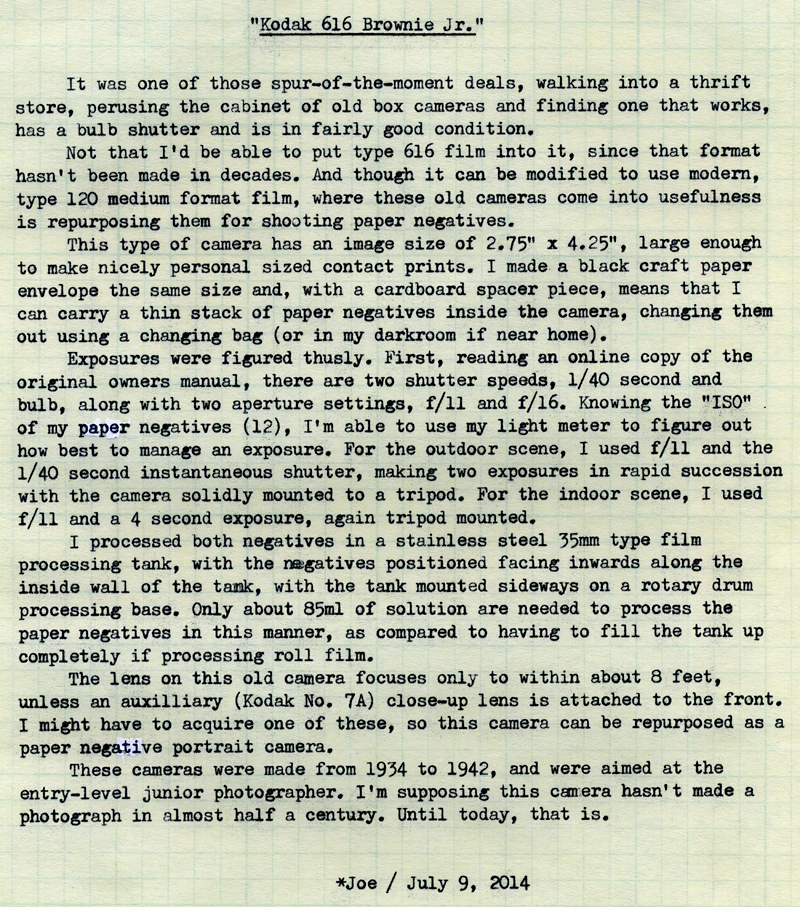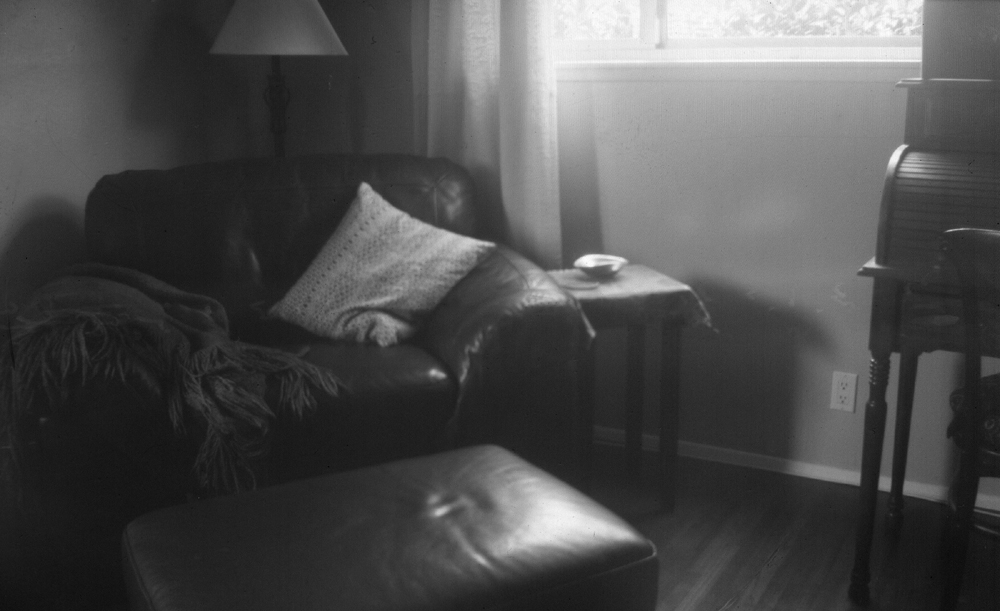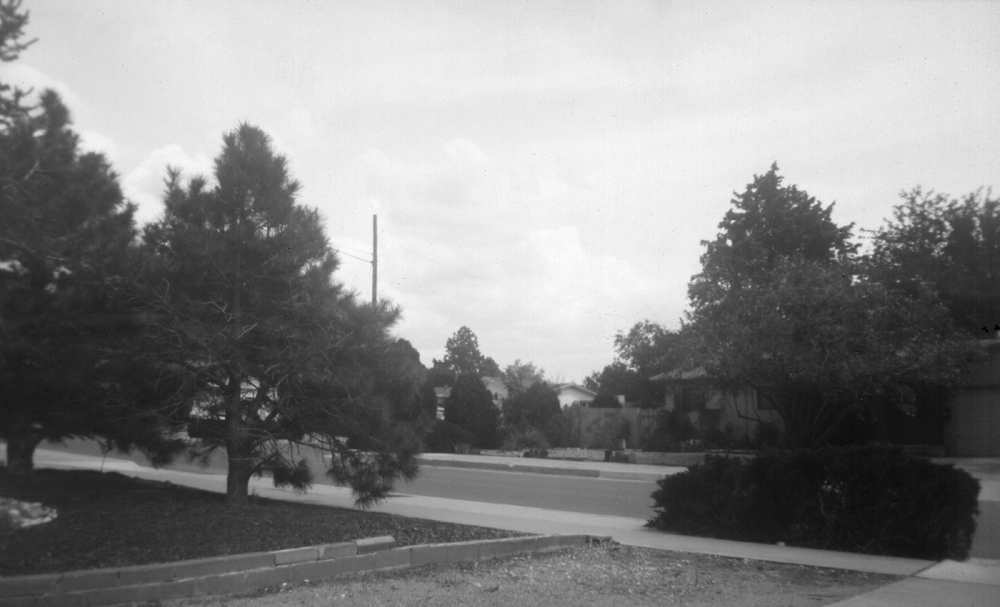Kodak 616 Brownie Jr.




Post-Script: These aren't spectacular images by any means, but merely initial examples of what this camera might be capable of, using paper negatives. The lens is certainly a bit soft, having that "glow" that serves to reduce the contrast - which might not be such a bad thing, especially in bright light that can otherwise be excessively harsh with UV-sensitive paper negatives.
For preparing my standard stock of photo paper for use in this camera, I figured out how to cut five paper negatives (each 2.75" x 4.25") from one 8" x 10" sheet of photo paper, with minimal waste.
I didn't mention in the typed piece, but using Harman Direct Positive Paper (though it's no longer manufactured, I still have a supply in my darkroom) would enable proper exposures in bright light using the bulb shutter setting (the Harman paper being much slower than conventional paper negatives).
The reason is that, with the ISO 12 paper negatives, bright daylight requires a slower shutter speed than what the camera's instantaneous shutter is capable of (which is why I did two exposures back-to-back, tripod-mounted, for the outdoor image), while bright daylight is too much light to permit using the bulb shutter setting. It helps in this case to have a really slow paper, much slower than ISO12; or else employ a neutral density filter over the lens. It is also possible to use a darkroom contrast control printing filter over the lens, to both slow down the paper's speed and reduce excess contrast, but that will require more experiments.
I'm already looking at acquiring a Kodak close-up lens for this camera, as it seems ideally suited for producing intimate portraits.
Top photo via Lumix G5, typecast via Hermes Rocket.

1 Comments:
Nice 616. The images are quite good for using a Brownie and direct exposure paper. I've not tried that paper yet. Maybe afte we get moved back to VA.
Post a Comment
<< Home